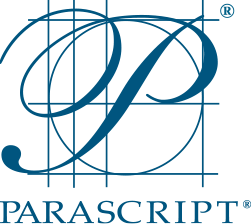Back in March and April, Parascript commissioned research with the Aite Group to better understand the current state of receivables processing automation at mid-market companies ($50m – $500m). Most specifically, we were interested in the more complex, business-to-business (B2B) market. We learned a great deal. A few of the highlights: The average mid-size B2B company […]
The 2 Most Common Misconceptions about Recognition Technology
When it comes to automated recognition technology, there are 2 common misconceptions about expected results that can be easily solved with tuning. Misconception #1: All items in a stream are equally hard to read, both automatically and manually The items that cause the most errors and rejects are not random. In fact, the items that […]
Efficient Processing of Incoming Mail
For small companies and large enterprises alike, mail continues to be an integral part of the document workflow. In a typical mail center, 60 to 70 percent of the labor is spent sorting incoming and interoffice mail. Incoming mail is defined as those mail pieces that are received by any company, and in addition to […]
The Truth about Trainable Forms Processing
There are many capture systems that market the ability to automatically learn document formats and layouts or to allow the system to be trained. In either case, the objective is twofold: Minimize the effort required to define document rules specific to each document variant and Improve overall recognition rates and lower error rates. The Problem […]
Understanding Recognition: Reject Mechanism
Let’s explore the mathematical model for optimizing the tradeoff between errors and rejects. The reject mechanism helps to guarantee the specified error level required by an application. Recognition engines usually return an answer accompanied by a value parameter called confidence value. The confidence value ranges from 0 to 100 and indicates how confident the engine is that […]
Back to School – Field v Character Recognition Circa 1999
Ever dust off something your company was working on ten years ago and scratch your head in a moment of deja-vu, wondering if anything has actually changed? Heres a scan of a Parascript newsletter, from 1999! The funny thing is, reading it feels like not much has changed. There have been M&As, (Captiva to name […]
Understanding Recognition: Errors and Rejects
There are 3 possible outcomes when recognition engines attempt to read any data: the correct answer, error, or reject. This post will focus on understanding errors and rejects and how to find the right balance between them. Errors refer to the instances when a recognition engine gives an incorrect result. The problem with errors is […]
Big Decision Coming Up? A Process for Making Better Choices
By Don Dew, Director of Marketing Do you have a big decision coming up? Whether buying a car, looking for a job, or evaluating capture software, one thing is for certain. As a human, your likelihood of making the best decision is, frankly, flawed out of the gate. The good news is, with a little […]
AIIM Report: Only 13% of Form Data is Being Extracted
AIIM just released the market watch report Winning the Paper Wars Capture the Content and Mobilize the Process Troops where they explore the reasons why paper-free processes have been slow to be adopted. Not surprisingly, the report shows that while 70% of businesses are scanning as part of their process, only 13% are using […]
Operating Point – The Most Critical Number in Recognition
Theres a lot of confusion around how to judge the accuracy of intelligent character recognition (ICR). Creating a metric is critical, as it helps us define the business case. To that end, Parascript engines produce an internal metric, called confidence value. And while this metric is critical to defining the business case, it is really […]
Vocabularies and ICR – Why You May Not Be Getting The Results You Expect
The goal of every recognition engine is to produce the highest accuracy possible which is probably pretty obvious (who uses technology to get poor results?). But did you know that the type and quality of images being recognized can and often produces significantly different results, depending upon which recognition technology is used? For example, in […]
Advanced Capture for Managing Data Exceptions
There are three primary areas businesses should examine when approaching a document capture project. Without having a solid grounding, business can face significant pain regarding their ability to effectively collect data and ensure its quality, all without significantly increasing exception handling. Many companies dont take advantage of data recognition and extraction capabilities, even for the […]
